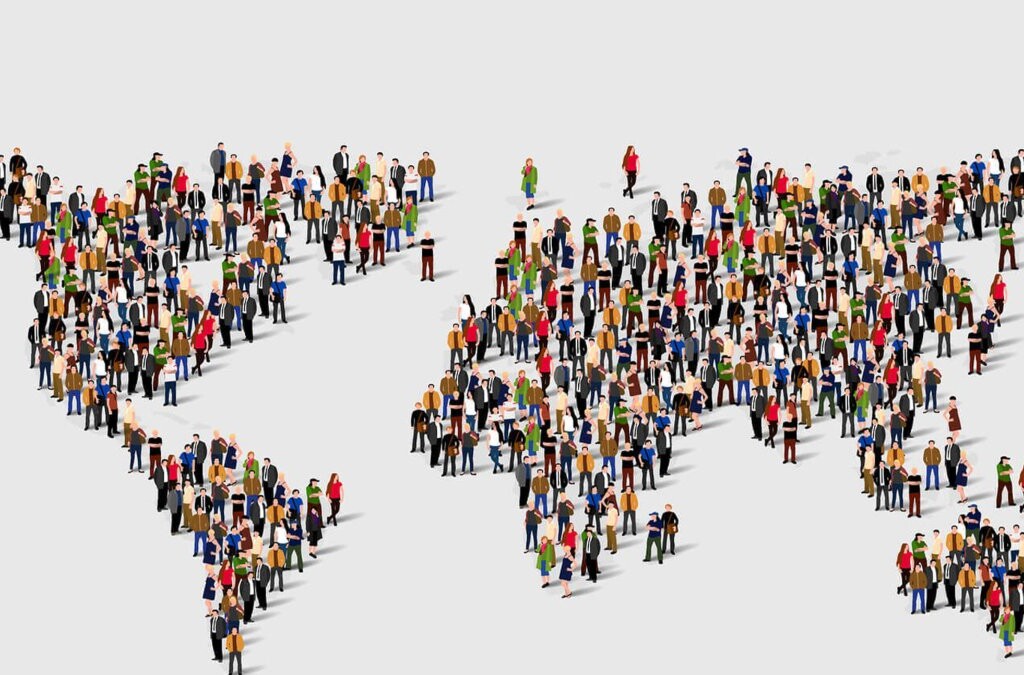What are the planet’s demographic expectations for the coming decades, when the Earth will exceed 8 billion inhabitants? The UN advises States to start incorporating population aging into their health and retirement plans.
We already number 8 billion people on Earth
November 15, 2022, according to UN projections, today is the day when there will be 8 billion people on Earth.
By 2030, 8.5 billion people will inhabit the planet; by 2050, 9.7 billion; and by the 2080s, 10.4 billion. However, population growth is not as rapid as before.
The current growth rate is the lowest since the 1950s, according to a United Nations report published a few months ago.
The world’s population is also growing unevenly
Only eight nations will account for more than half of global population growth over the next 30 years: the Democratic Republic of Congo, Egypt, Ethiopia, India, Nigeria, Pakistan, the Philippines and Tanzania. Some countries are declining, while others are increasing.
Populations in some of the most advanced economies are already declining as fertility rates fall below the “replacement rate” of 2.1 children per woman. According to a report released by the UN in July, the population of at least 61 countries will have declined by as much as 1% by 2050.
China has announced that its population will begin to decline next year, much earlier than expected, because it has one of the lowest fertility rates in the world (1.15 children per woman).
Even though the nation ended its one-child policy in 2016 and began rewarding couples having two or more children, India’s population is expected to overtake China as the world’s most populous nation shortly.
Larger population but fewer children
Around the world, even in many of the nations where the population is growing, fertility rates are declining. This is because more people are having children as older generations grow older, even though collectively they are having fewer children than their parents.
This increase is due in part to advances in science and medicine, which allow more children to reach adulthood and more adults to live to old age. he forecast is that this trend will continue, indicating that by 2050 average life expectancy will have increased to 77.2 years.
Another suggestion of this pattern is that by 2050, the current percentage of people aged 65 and over will increase from 10% to 16%. On the other hand, the distribution will be uneven in this case, as age ranges will be more extreme in places such as East Asia and Western Europe.
The results of the changes
According to the May UN analysis, the proportion of women among the elderly should decrease.
Women represent 55.7% of the population aged 65 and over and have a longer life expectancy than men. By 2050, that proportion could fall to 54.5%.
On average, women live 5.4 years longer than men. The gender gap in Latin America is the largest gender discrepancy ever observed in the world, with women living 7 years longer than men.
The UN issued a warning in the report, advising nations to modify their pension and public health programs to take into account the new reality of an aging population.
Demographic bonus
The UN highlighted that the working-age population (25-64 years) is increasing in some regions of Latin America, Asia and Africa.
Consequently, these nations would have the opportunity to benefit from the so-called “demographic bonus”, which occurs when the ratio of people of working age to those who depend on the state or employees for their maintenance is high.
According to experts, this is a crucial element for achieving “a leap in progress”. In Brazil, the working-age population is at its highest historical level, while the population of children and the elderly who depend on them is at its lowest level.
In addition, the report reveals the impact of immigration in nations where population growth has outpaced birth rates. Immigration will continue to fuel population expansion in high-income nations for decades to come.
Between 2022 and 2050, immigration alone will cause a decline of 1% or more in some nations. This is the result of their low birth rates and, in some cases, the exodus of citizens from these countries. Bulgaria, Latvia, Lithuania, Serbia and Ukraine are examples.
With information from laopinion.com




